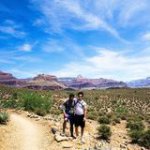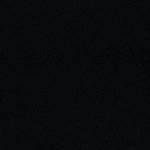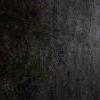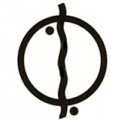-
Posts
1,148 -
Joined
-
Last visited
Reputation Activity
-
 tupp got a reaction from Nathan Gabriel in An adventure into the Panasonic GX85/80 begins - and a look at the Leica Nocticron for Micro Four Thirds
tupp got a reaction from Nathan Gabriel in An adventure into the Panasonic GX85/80 begins - and a look at the Leica Nocticron for Micro Four Thirds
At Cinegear, I asked a Panasonic salesman about the HDMI output of both the GX85 and the G7, and he insisted that both gave 8 bit, 4:2:0 video out of HDMI.
Later, I went to the Atomos booth, and asked a rep if any of their recorders could sense the bit depth and chroma sub-sample of a camera signal (to test the outputs of the G7 and GX85). He said no, but after taking a swig from his beer, he boasted that he knew the output specs on every camera and that the G7 was definitely 8 bit, 4:2:2. After I offered a US$5 wager that the G7 wasn't 8 bit, 4:2:2, we went to the Panasonic booth to find out the answer.
With the tipsy Atomos rep at my side, suddenly the Panasonic salesman was not so sure as before. He admitted that the output of some cameras haven't been tested, but that the corporate office instructed the sales reps to say 8 bit, 4:2:0 for most cameras. However, he was definitely sure that the G7 output 8 bit, 4:2:0.
So, I don't know what to tell you. Hopefully, someone will connect the GX85 to a capable monitor/recorder/analyzer and post the answer here.
-
 tupp got a reaction from Xavier Plagaro Mussard in An adventure into the Panasonic GX85/80 begins - and a look at the Leica Nocticron for Micro Four Thirds
tupp got a reaction from Xavier Plagaro Mussard in An adventure into the Panasonic GX85/80 begins - and a look at the Leica Nocticron for Micro Four Thirds
At Cinegear, I asked a Panasonic salesman about the HDMI output of both the GX85 and the G7, and he insisted that both gave 8 bit, 4:2:0 video out of HDMI.
Later, I went to the Atomos booth, and asked a rep if any of their recorders could sense the bit depth and chroma sub-sample of a camera signal (to test the outputs of the G7 and GX85). He said no, but after taking a swig from his beer, he boasted that he knew the output specs on every camera and that the G7 was definitely 8 bit, 4:2:2. After I offered a US$5 wager that the G7 wasn't 8 bit, 4:2:2, we went to the Panasonic booth to find out the answer.
With the tipsy Atomos rep at my side, suddenly the Panasonic salesman was not so sure as before. He admitted that the output of some cameras haven't been tested, but that the corporate office instructed the sales reps to say 8 bit, 4:2:0 for most cameras. However, he was definitely sure that the G7 output 8 bit, 4:2:0.
So, I don't know what to tell you. Hopefully, someone will connect the GX85 to a capable monitor/recorder/analyzer and post the answer here.
-
 tupp got a reaction from John Matthews in An adventure into the Panasonic GX85/80 begins - and a look at the Leica Nocticron for Micro Four Thirds
tupp got a reaction from John Matthews in An adventure into the Panasonic GX85/80 begins - and a look at the Leica Nocticron for Micro Four Thirds
At Cinegear, I asked a Panasonic salesman about the HDMI output of both the GX85 and the G7, and he insisted that both gave 8 bit, 4:2:0 video out of HDMI.
Later, I went to the Atomos booth, and asked a rep if any of their recorders could sense the bit depth and chroma sub-sample of a camera signal (to test the outputs of the G7 and GX85). He said no, but after taking a swig from his beer, he boasted that he knew the output specs on every camera and that the G7 was definitely 8 bit, 4:2:2. After I offered a US$5 wager that the G7 wasn't 8 bit, 4:2:2, we went to the Panasonic booth to find out the answer.
With the tipsy Atomos rep at my side, suddenly the Panasonic salesman was not so sure as before. He admitted that the output of some cameras haven't been tested, but that the corporate office instructed the sales reps to say 8 bit, 4:2:0 for most cameras. However, he was definitely sure that the G7 output 8 bit, 4:2:0.
So, I don't know what to tell you. Hopefully, someone will connect the GX85 to a capable monitor/recorder/analyzer and post the answer here.
-
 tupp reacted to Gonzalo Ezcurra in ECyclops & MiniCyclops - 20X20 & 14X14 INCHES SENSOR SIZE HISTORICAL HD FOOTAGE
tupp reacted to Gonzalo Ezcurra in ECyclops & MiniCyclops - 20X20 & 14X14 INCHES SENSOR SIZE HISTORICAL HD FOOTAGE
Hi, Tupp
Yes, you can make "Swing / Tilt / Shift" movement, thanks to the OmegaViwe head, but the image circles I use lenses are tight and do not spare much image to play
-
 tupp reacted to Gonzalo Ezcurra in ECyclops & MiniCyclops - 20X20 & 14X14 INCHES SENSOR SIZE HISTORICAL HD FOOTAGE
tupp reacted to Gonzalo Ezcurra in ECyclops & MiniCyclops - 20X20 & 14X14 INCHES SENSOR SIZE HISTORICAL HD FOOTAGE
I notice that the ground glass makes as a buffer high and low lights, such as expanding the dynamic range, as well as having other image structure, that gives me the feeling more 3D Pop, regardless of the depth of field is most evident .
-
 tupp reacted to Nathan Gabriel in An adventure into the Panasonic GX85/80 begins - and a look at the Leica Nocticron for Micro Four Thirds
tupp reacted to Nathan Gabriel in An adventure into the Panasonic GX85/80 begins - and a look at the Leica Nocticron for Micro Four Thirds
For Linux I highly recommend kdenlive. It's easily the best free NLE I've seen, it handles my gh3 footage no problem. I know there are better proprietary options, but you might be surprised at how capable kdenlive is.
-
 tupp got a reaction from Nathan Gabriel in An adventure into the Panasonic GX85/80 begins - and a look at the Leica Nocticron for Micro Four Thirds
tupp got a reaction from Nathan Gabriel in An adventure into the Panasonic GX85/80 begins - and a look at the Leica Nocticron for Micro Four Thirds
Not sure what you are after in regards to a "stable/secure desktop," but running an OS in a VM might not be the best way to test such "stability," because of the resource drain and potential glitches. I have used a lot of different desktops and window managers in the past 14 years, and I never had any problems that I can recall. I tend to use lightweight window managers instead of full desktops. By the way, those who use tiling widow managers usually run circles around their "point-&_click" counterparts.
In regards to "pro and free" video and photo editors, the two are most definitely not mutually exclusive. A significant number of pros use open source (free) software -- even photo and video editors.
For an NLE/compositor, you would probably be using Blender, Cinelerra, Lightworks or Pirnanha (proprietary, with the high-end version at US$250,000). Kdenlive looks like a good NLE, and it is has become more robust and a lot more popular since I played around with it many years ago. The studio version of the Lightworks NLE is probably pretty good, but I have never tried it.
There are numerous image editors/processors that run on Linux. My favorites are GIMP and Darktable, but there is also Krita, CinePaint, RawTherapee, Raw Studio, Delaboratory, UFRaw, GTKRawGallery, LightZone, Pixeluvo (looks like an interesting processor/editor combo), Photivo, AfterShot Pro, Fotoxx, etc. These are mostly raster image editors, and, of course, there are also a few open source vector image creators/editors.
Both proprietary and open source projects come and go, and no one can guarantee the future. I am guessing that you don't want to stick with FCP. For open source NLEs, Blender has a strong community with a lot of folks crazy about its editing capabilities. The community version of Cinelerra is updated fairly regularly, and it has some unique capabilities (but its default theme is rather garish). I don't know much about the proprietary NLEs, but I think Lightworks has a following. I am keeping my eye on Kdenlive.
I wouldn't be so sure of that. I would guess that a few others in the list of the open source image processors above can already read raw files from the GX80. Open source projects can move fast.
Most of the raw image processing apps have fine color control.
I don't know much about RawTherapee, but Darktable has preset camera color profiles for certain camera models/brands/film stocks. Darktable usually defaults the profile brand/model it reads from exif info, but I sometimes use an Agfa profile on my Canon raw images. Of course, Darktable also allows one to create and save custom profiles. I would imagine that RawTherapee and a lot of the other open source raw image processors offer similar preset/custom profile capability.
Judging from the fact that RawTherapee already has the capability to import the GX80/85 raw files, I would guess that there is some current activity in that project.
I don't know if people have moved from RawTherapee to Darktable -- there are so many options in the open source world, as evident from the above list if photo editors and raw image processors. I use Darktable because that's what I started with years ago.
-
 tupp got a reaction from John Matthews in An adventure into the Panasonic GX85/80 begins - and a look at the Leica Nocticron for Micro Four Thirds
tupp got a reaction from John Matthews in An adventure into the Panasonic GX85/80 begins - and a look at the Leica Nocticron for Micro Four Thirds
Perhaps RawTherapee the default settings/algorithm is not optimized for the GX80, or perhaps its defaults are just a little laid-back in regards to sharpening, saturation and contrast, so some tweaking might help. As I mentioned, I am happy with Darktable's presets as a starting point.
I would guess that Iridient Developer uses open source DCRaw, if it already has GX80 raw capability. Many of the open source raw developers/processors are multi-platform, so you can use them on OSX, Windows or Linux. As open source software is usually free, it can't hurt to try other raw processors to see if you like their defaults.
-
 tupp reacted to John Matthews in An adventure into the Panasonic GX85/80 begins - and a look at the Leica Nocticron for Micro Four Thirds
tupp reacted to John Matthews in An adventure into the Panasonic GX85/80 begins - and a look at the Leica Nocticron for Micro Four Thirds
I've got nothing against FCPX... love what I can do with it and the plugins galore! I'll take another peak at Kdenlive myself.
A quick note about RawTherapee, it lets me "see" the raw file, but I don't think it's optimised- "supported" would be too strong of a word. I think I'm just going to have to be patient until software catches up with cameras. I did have a look at Iridient Developer 3 (officially supporting the GX80, along with Silkypix) and it's been amazing. Too bad it's OSX only, costs $99, and workflow would need to be changed.
Thank you so much for your help and I'll keep you posted on where I go with this. One thing is for sure, I'm moving from Lightroom and I won't be joining Adobe CC.
-
 tupp got a reaction from John Matthews in An adventure into the Panasonic GX85/80 begins - and a look at the Leica Nocticron for Micro Four Thirds
tupp got a reaction from John Matthews in An adventure into the Panasonic GX85/80 begins - and a look at the Leica Nocticron for Micro Four Thirds
Not sure what you are after in regards to a "stable/secure desktop," but running an OS in a VM might not be the best way to test such "stability," because of the resource drain and potential glitches. I have used a lot of different desktops and window managers in the past 14 years, and I never had any problems that I can recall. I tend to use lightweight window managers instead of full desktops. By the way, those who use tiling widow managers usually run circles around their "point-&_click" counterparts.
In regards to "pro and free" video and photo editors, the two are most definitely not mutually exclusive. A significant number of pros use open source (free) software -- even photo and video editors.
For an NLE/compositor, you would probably be using Blender, Cinelerra, Lightworks or Pirnanha (proprietary, with the high-end version at US$250,000). Kdenlive looks like a good NLE, and it is has become more robust and a lot more popular since I played around with it many years ago. The studio version of the Lightworks NLE is probably pretty good, but I have never tried it.
There are numerous image editors/processors that run on Linux. My favorites are GIMP and Darktable, but there is also Krita, CinePaint, RawTherapee, Raw Studio, Delaboratory, UFRaw, GTKRawGallery, LightZone, Pixeluvo (looks like an interesting processor/editor combo), Photivo, AfterShot Pro, Fotoxx, etc. These are mostly raster image editors, and, of course, there are also a few open source vector image creators/editors.
Both proprietary and open source projects come and go, and no one can guarantee the future. I am guessing that you don't want to stick with FCP. For open source NLEs, Blender has a strong community with a lot of folks crazy about its editing capabilities. The community version of Cinelerra is updated fairly regularly, and it has some unique capabilities (but its default theme is rather garish). I don't know much about the proprietary NLEs, but I think Lightworks has a following. I am keeping my eye on Kdenlive.
I wouldn't be so sure of that. I would guess that a few others in the list of the open source image processors above can already read raw files from the GX80. Open source projects can move fast.
Most of the raw image processing apps have fine color control.
I don't know much about RawTherapee, but Darktable has preset camera color profiles for certain camera models/brands/film stocks. Darktable usually defaults the profile brand/model it reads from exif info, but I sometimes use an Agfa profile on my Canon raw images. Of course, Darktable also allows one to create and save custom profiles. I would imagine that RawTherapee and a lot of the other open source raw image processors offer similar preset/custom profile capability.
Judging from the fact that RawTherapee already has the capability to import the GX80/85 raw files, I would guess that there is some current activity in that project.
I don't know if people have moved from RawTherapee to Darktable -- there are so many options in the open source world, as evident from the above list if photo editors and raw image processors. I use Darktable because that's what I started with years ago.
-
 tupp got a reaction from John Matthews in An adventure into the Panasonic GX85/80 begins - and a look at the Leica Nocticron for Micro Four Thirds
tupp got a reaction from John Matthews in An adventure into the Panasonic GX85/80 begins - and a look at the Leica Nocticron for Micro Four Thirds
If you want to try Linux but have no experience, start with one of the newbie distros: Mint, Ubuntu, PCLinuxOS, Mageia, OpenSUSE,etc.
Also, you can try most of these distros without installing them by booting "live" versions (liveCD, liveDVD, liveUSB, liveSD, etc.). The live versions of these big newbie distros will usually run more slowly than installed versions, but a live OS running off of a USB 3.0 flash drive might be fairly snappy.
By the way, there are multimedia distros designed for video/audio production and photography, such as Ubuntu Studio, AVLinux and Apodio. These multimedia distros will often come with a lot of codecs already installed, but it is fairly easy to install codecs on the non-multimedia distros.
In regards to GX80/GX85 raw support, you could just install open source Raw Therapee on OSX. It reportedly works with GX80/GX85 which uses the open source DCRaw library, upon which Adobe Camera Raw converter (and pretty much every other raw file converter) is based. Consequently, a lot of the other open source raw "darkroom" might also already have the ability to read GX80/GX85 raw files, as many open source projects tend to move faster than their proprietary counterparts. I use open source Darktable which can also be installed on OSX.
If you start moving to Linux, there are other things of which it might be good to be aware, such as which NLEs (both open source and proprietary) are the most actively developed and robust, and such as which audio editor is ideal for your situation.
-
 tupp got a reaction from TheRenaissanceMan in Camera suggestions for specific need
tupp got a reaction from TheRenaissanceMan in Camera suggestions for specific need
It's a good thing that @TheRenaissanceMan mentioned Personal-View, otherwise you would have never known about it!
http://www.personal-view.com is a camera web site and forum run by Vitaliy Kiselev, who happens to be the founding developer of the GH1 and GH2 hacks. He also uses the site to sell gear.
-
 tupp got a reaction from User in Splitting A ProRes File - Without Re-Encoding?
tupp got a reaction from User in Splitting A ProRes File - Without Re-Encoding?
By the way, since you are just copying, you might not need the extra codecs.
-
 tupp got a reaction from User in Splitting A ProRes File - Without Re-Encoding?
tupp got a reaction from User in Splitting A ProRes File - Without Re-Encoding?
Just try it -- ffmpeg is free and open source.
Here is a tutorial on an easy way to install ffmpeg (with extra codecs) on a Mac, using Homebrew. Here is another tutorial on how to manually install ffmpeg (with extra codecs).
The ffmpeg command to split a file without re-encoding is fairly simple, because one is merely copying the video and audio. It is probably easiest to use a separate command for each part of the file desired. So, the ffmpeg commands to split a five minute file directly in half will be something close to these:
-
 tupp got a reaction from silvertonesx24 in Compensation for Actors/Actresses
tupp got a reaction from silvertonesx24 in Compensation for Actors/Actresses
On low budget paid shoots, leads should probably not get less than crew department heads, and day players should probably get around the same as third tier crew.
-
 tupp reacted to Zak Forsman in Compensation for Actors/Actresses
tupp reacted to Zak Forsman in Compensation for Actors/Actresses
We pay a day rate. And that rate depends on which SAG-Aftra contract we're shooting under. We usually only post to Breakdown Express/Actors Access.
-
 tupp reacted to Policar in Compensation for Actors/Actresses
tupp reacted to Policar in Compensation for Actors/Actresses
You'd be surprised how low it is under Modified and Ultra Low Budget contracts. I've worked with a group of pretty big names making under $200/day on a feature produced by an A-lister under Modified low budget. Ultra Low Budget you can get away with deferred pay (no pay).
And how high it is for ads ($50k+/day for background including residuals on major spots).
There's also always non-union. Most non union actors will work for a couple hundred dollars a day to have something for their reel.
-
 tupp got a reaction from IronFilm in Blackmagic Micro Cinema Camera
tupp got a reaction from IronFilm in Blackmagic Micro Cinema Camera
Don't know if the forum has ever discussed this Feelworld viewfinder (US$229) or this Feelworld monitor (US$139). Both of these items are spec'd to handle a 1080P, 60fps/59.94fps signal through HDMI, so they might work with the BMMCC's 60P output.
-
 tupp got a reaction from August McCue in Aputure: the Blackmagic of lighting
tupp got a reaction from August McCue in Aputure: the Blackmagic of lighting
Don't get LED fixtures. Get straight tungsten. The footcandle-per-dollar is generally better with tungsten as is the power-luminance density. Plus, focusable tungsten fixtures are significantly less expensive than their LED counterparts.
Straight tungsten fixtures are probably the most versatile source, so they cover most lighting situations.
-
 tupp reacted to TheRenaissanceMan in Aputure: the Blackmagic of lighting
tupp reacted to TheRenaissanceMan in Aputure: the Blackmagic of lighting
Don't forget Aputure's great FineHD monitors, one of which will probably be my next purchase.
-
 tupp got a reaction from TheRenaissanceMan in Aputure: the Blackmagic of lighting
tupp got a reaction from TheRenaissanceMan in Aputure: the Blackmagic of lighting
Don't get LED fixtures. Get straight tungsten. The footcandle-per-dollar is generally better with tungsten as is the power-luminance density. Plus, focusable tungsten fixtures are significantly less expensive than their LED counterparts.
Straight tungsten fixtures are probably the most versatile source, so they cover most lighting situations.
-
 tupp got a reaction from Bioskop.Inc in Zebras @ 70% vs 100% - what do you prefer?
tupp got a reaction from Bioskop.Inc in Zebras @ 70% vs 100% - what do you prefer?
Exposing skin tones by numbers can get one into trouble. In the first place, skin tone varies. Consider a shot in which an exceptionally pale skinned person and a very dark skinned person are standing next to each other in the same frame -- which one's skin do you set to 70% IRE?
Secondly, what if the shot is supposed to be low key, with the subject darker than normal?
Generally, the exposure should be as high as possible to reduce noise, without undesirably blowing out areas and/or without making it difficult to regain normal looking highlights.
Use your eyes (and your lighting skills) to determine the relative values of the subject/set, and use the zebras to determine the highest feasible exposure.
-
 tupp got a reaction from bamigoreng in Zebras @ 70% vs 100% - what do you prefer?
tupp got a reaction from bamigoreng in Zebras @ 70% vs 100% - what do you prefer?
Exposing skin tones by numbers can get one into trouble. In the first place, skin tone varies. Consider a shot in which an exceptionally pale skinned person and a very dark skinned person are standing next to each other in the same frame -- which one's skin do you set to 70% IRE?
Secondly, what if the shot is supposed to be low key, with the subject darker than normal?
Generally, the exposure should be as high as possible to reduce noise, without undesirably blowing out areas and/or without making it difficult to regain normal looking highlights.
Use your eyes (and your lighting skills) to determine the relative values of the subject/set, and use the zebras to determine the highest feasible exposure.
-
 tupp got a reaction from sudopera in Zebras @ 70% vs 100% - what do you prefer?
tupp got a reaction from sudopera in Zebras @ 70% vs 100% - what do you prefer?
Exposing skin tones by numbers can get one into trouble. In the first place, skin tone varies. Consider a shot in which an exceptionally pale skinned person and a very dark skinned person are standing next to each other in the same frame -- which one's skin do you set to 70% IRE?
Secondly, what if the shot is supposed to be low key, with the subject darker than normal?
Generally, the exposure should be as high as possible to reduce noise, without undesirably blowing out areas and/or without making it difficult to regain normal looking highlights.
Use your eyes (and your lighting skills) to determine the relative values of the subject/set, and use the zebras to determine the highest feasible exposure.
-
 tupp got a reaction from jase in Zebras @ 70% vs 100% - what do you prefer?
tupp got a reaction from jase in Zebras @ 70% vs 100% - what do you prefer?
Be careful when using zebras at 100%, because the zebras on some cameras are misleading in that they "sum" the color channel levels to determine if the threshold has been reached. In such scenarios, the zebras don't indicate when a single color channel has breached the threshold. So, if one sets the zebras to 100%, one (or two) of the color channels could be blown out, and you might not see a zebra. If the camera also has an RGB histogram, one can get a good idea of how the zebras handle individual color channels.
Personally, I tend to set the zebra higher on raw and on some flat/log profiles. I often ETTR when shooting raw.












